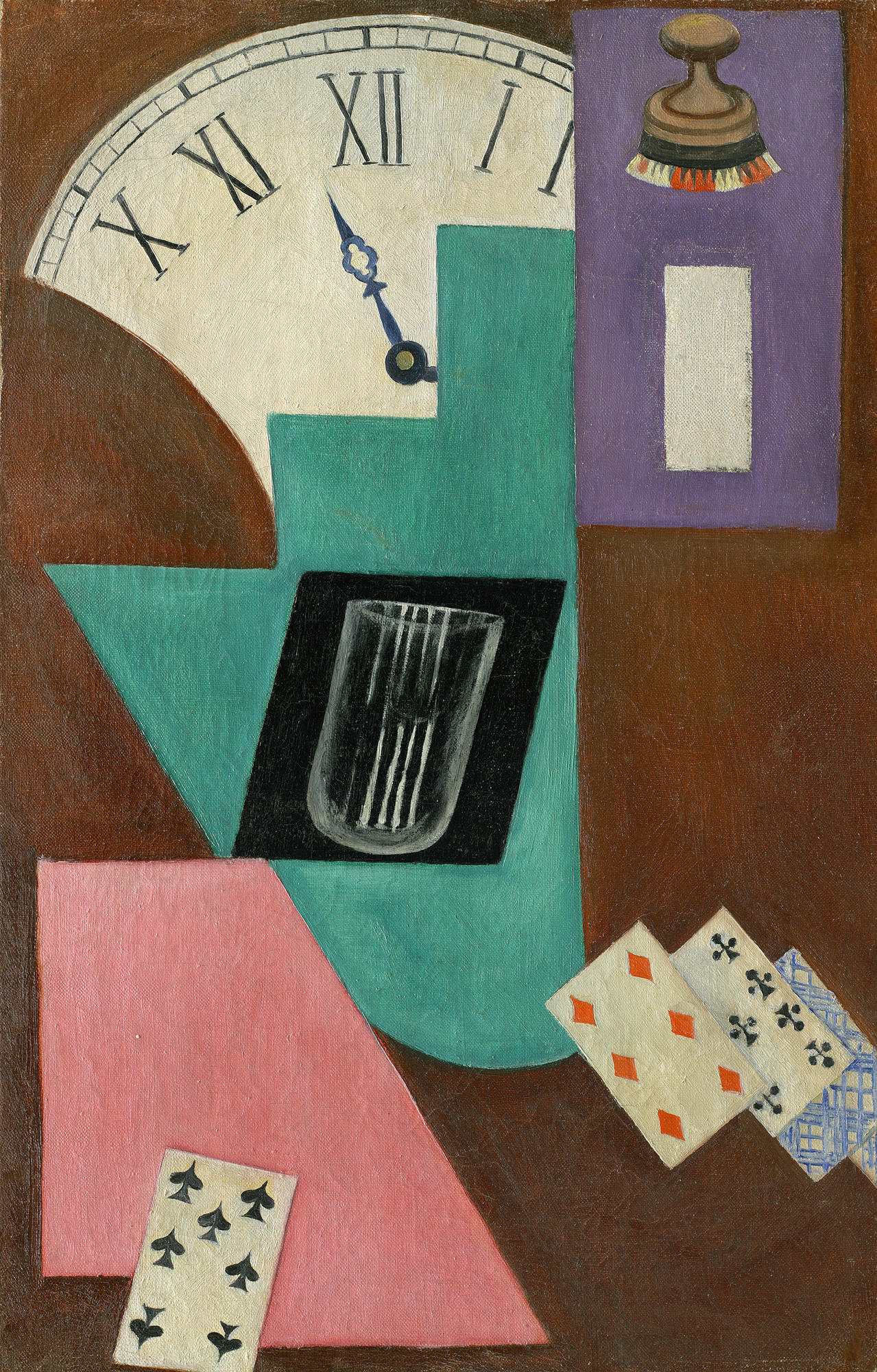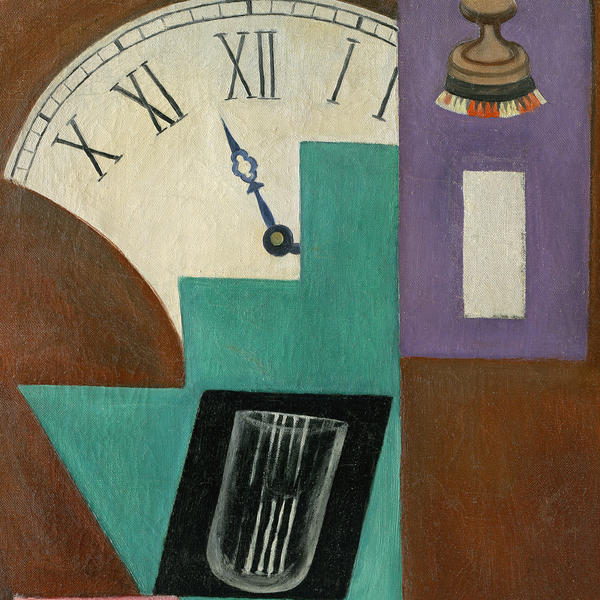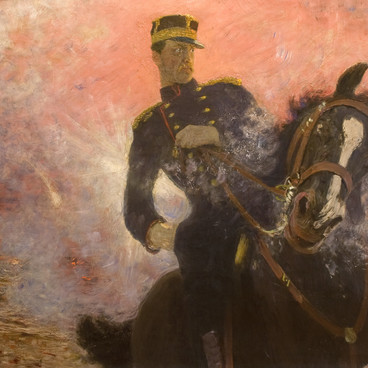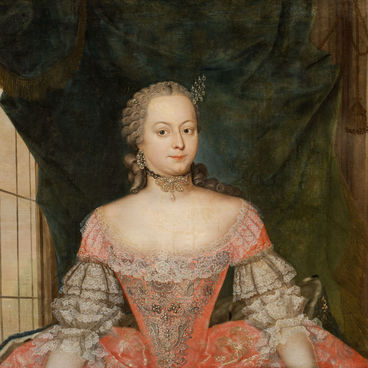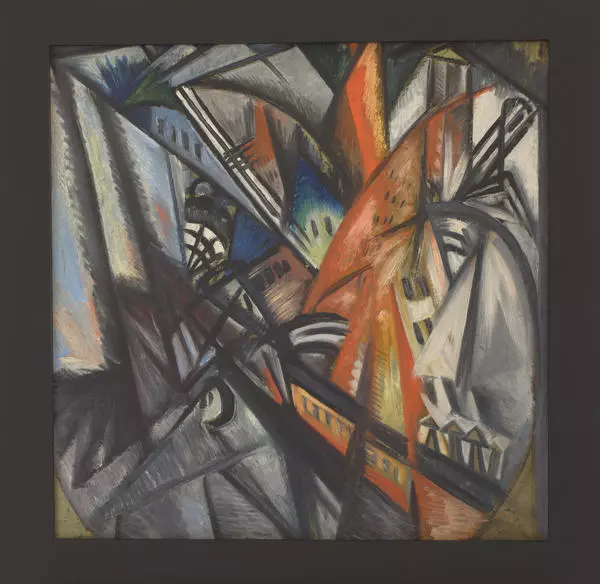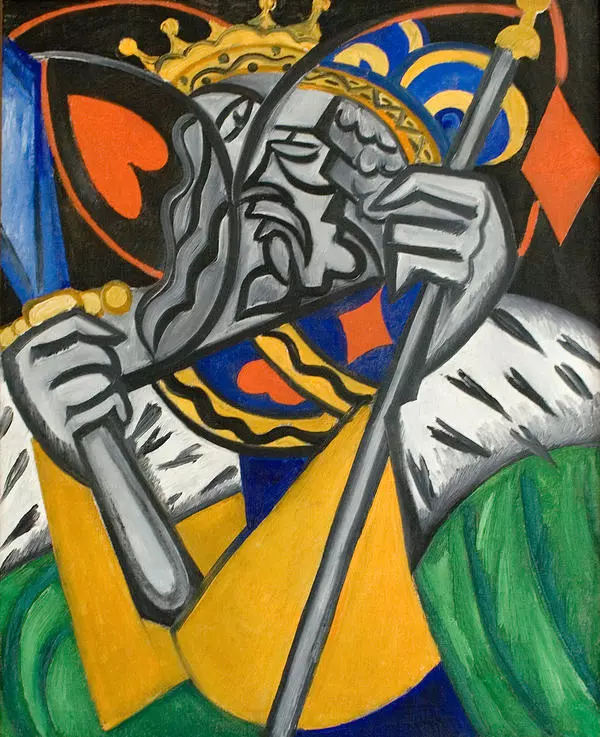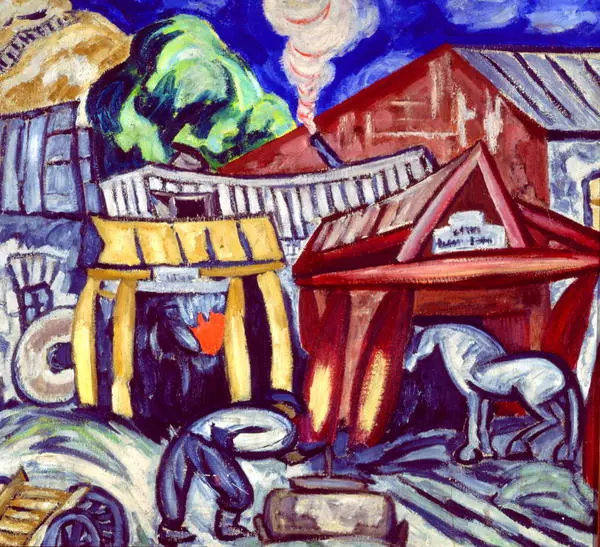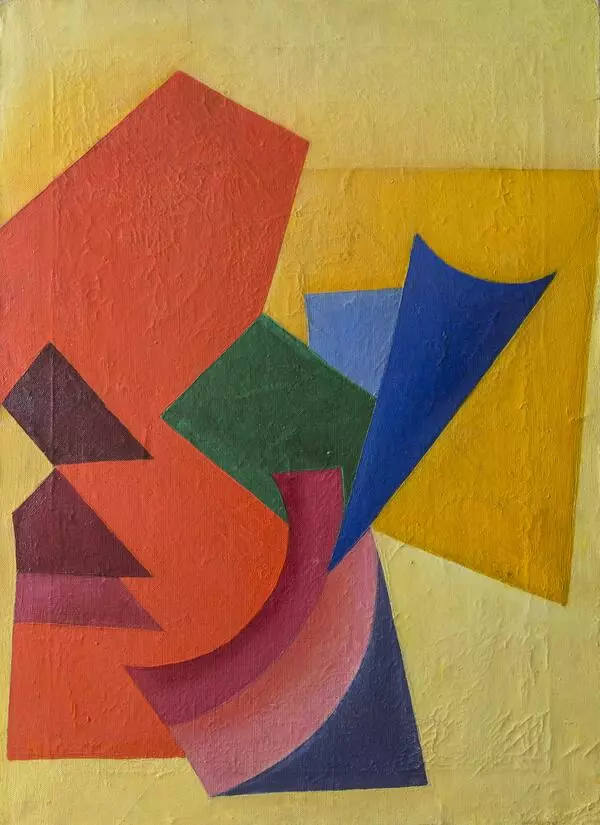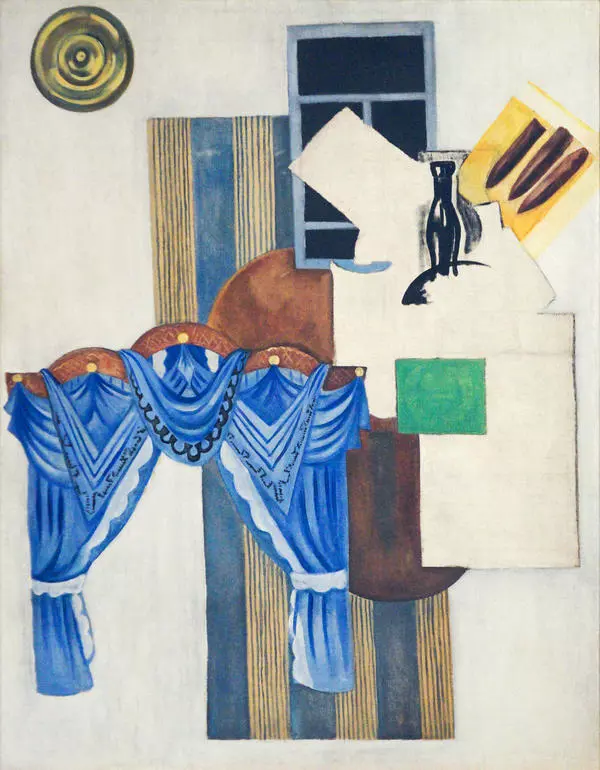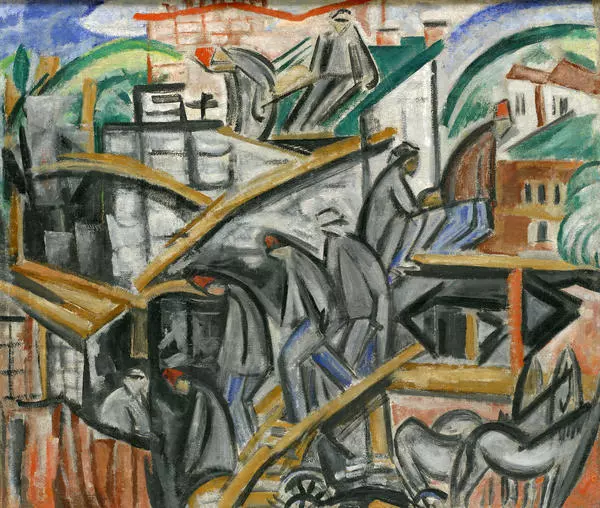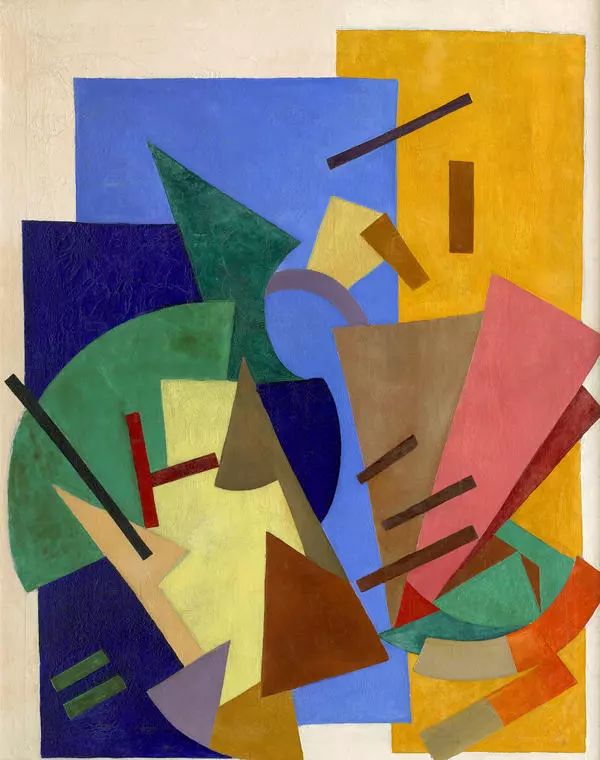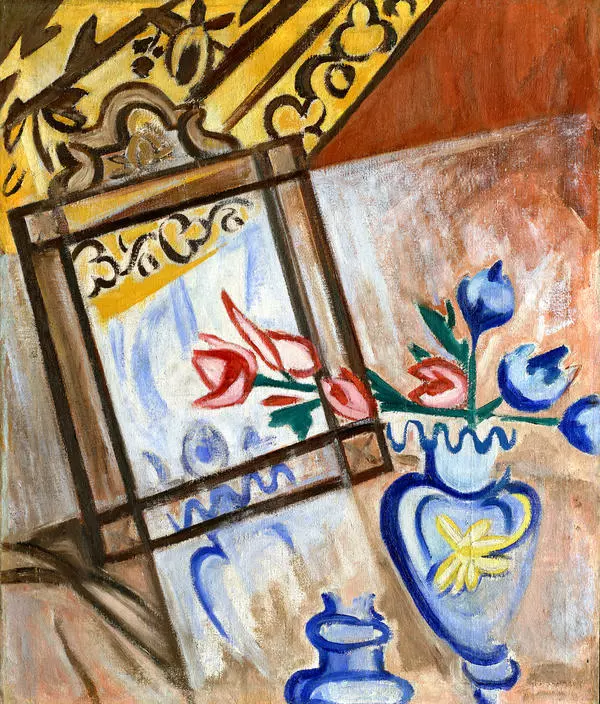Olga Rozanova painted A Clock and Cards (A Player’s Dream) in 1916. The artist was one of the founders of avant-garde art in Russia. She worked in the styles of primitivism, futurism and suprematism.
A Clock and Cards (A Player's Dream)
Время создания
1916
Размер
61x45 cm
Техника
Canvas, oil
Выставка
7
Открыть в приложении#1
Olga Rozanova
A Clock and Cards (A Player’s Dream)
#2
#3
The artist repeatedly returned to the theme of cards: card games and fortune-telling took a special place in her work. She published a series of Playing cards paintings in 1915. And a year earlier, Olga Rozanova made engravings on the same theme, which were published in 1915 in Zaumnaya Kniga (The Mind-Bogging Book) authored by Roman Jakobson and Alexei Kruchenykh.
#4
The still life composition features several geometric figures, against a dull dark brown background. There is a complex figure of the sea-waves color in the center, resembling a card table, covered with a green woolen cloth. On it, the artist drew a black parallelogram with an empty glass cup inside.
#5
We can see playing cards at the bottom of the table. There is a lilac rectangle in the upper right corner, where the artist conventionally depicted a white chalk and a brush, which erase the records on the woolen table cloth. A part of the dial is visible at the top.
#6
The painting is executed in the genre of futurism. Soviet art historian Abram Efros wrote:
‘Futurism is significant and beautiful as a plastic confession of the artist, who feels dissolved in the surfs, tides and whirlpools of life in the city. We can say about a poet and a futurist that they are not made, but they are born. Rozanova was a born futurist’.
#7
Olga Rozanova was born in 1886 into a noble family that lived in a Vladimir Region town. From an early age, the would-be artist wrote poems and drew. Rozanova graduated from the Vladimir gymnasium in 1904 and moved to Moscow, and then to St. Petersburg. While there, she attended the art school run by Elizabeth Zvantseva. One of her teachers was famous painter Kuzma Petrov-Vodkin, who greatly affected the way her creative path developed.
#8
In 1911, Olga Rozanova became a member of the Union of Youth and embarked on painting in the styles of primitivism and Fauvism. In 1916, Olga Rozanova joined the ranks of the suprematist artists. She painted more than fifteen canvases in this style and created her own version of suprematism. She was also fond of futurism at that period of time. Rozanova drew paintings and illustrated the books written by the futurist poets.
After the 1917 October revolution, Olga Rozanova worked as artistic director at the College for Fine Arts under the People’s Commissariat of Education. She was responsible for the preservation and development of folk crafts in Sergiev Posad, Abramtsevo and other cultural centers. Olga Rozanova died of diphtheria in November 1918.
читать дальшескрыть
00:00
00:00
1x
A Clock and Cards (A Player's Dream)
Время создания
1916
Размер
61x45 cm
Техника
Canvas, oil
Выставка
7
Открыть в приложении
Поделиться
